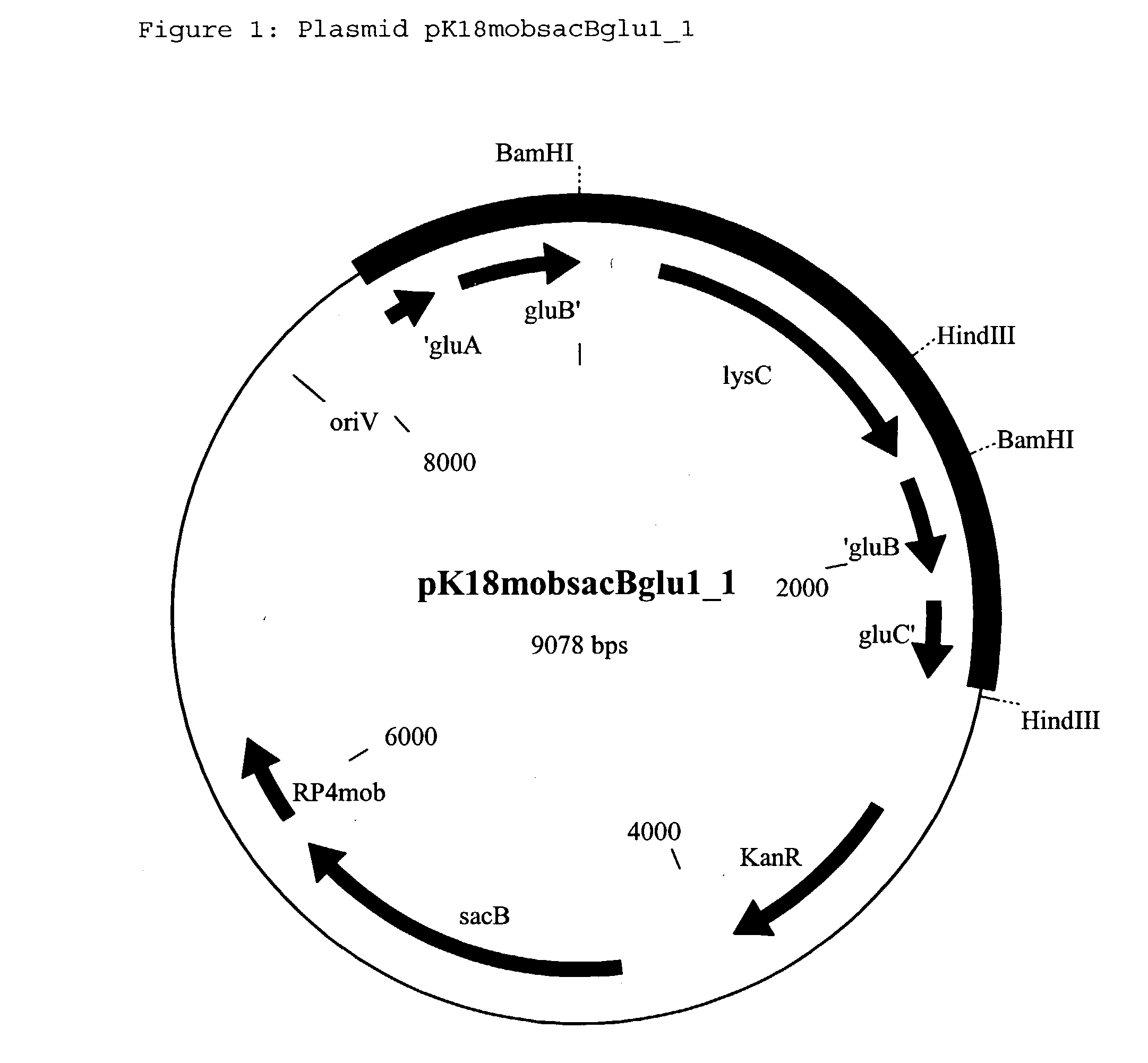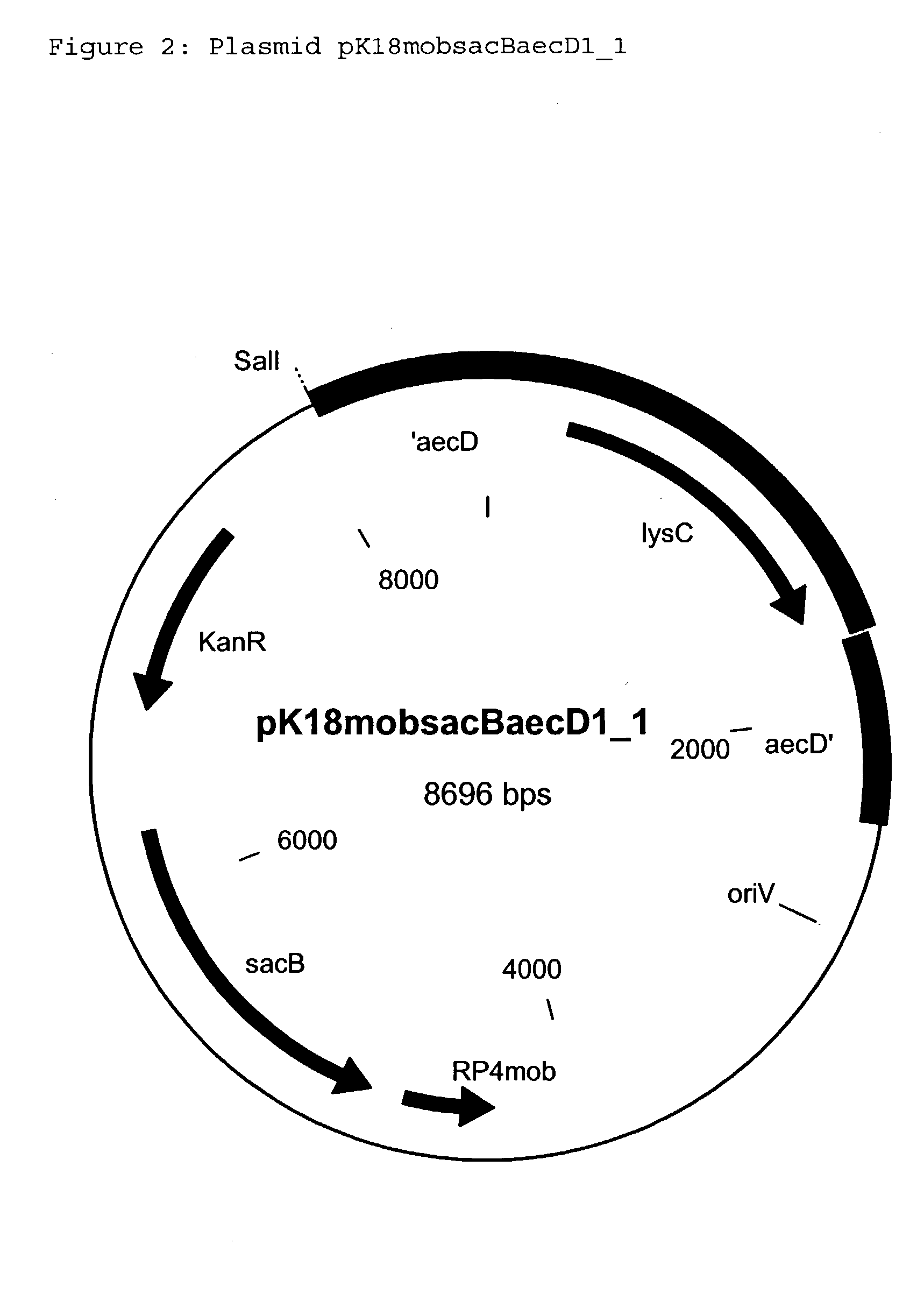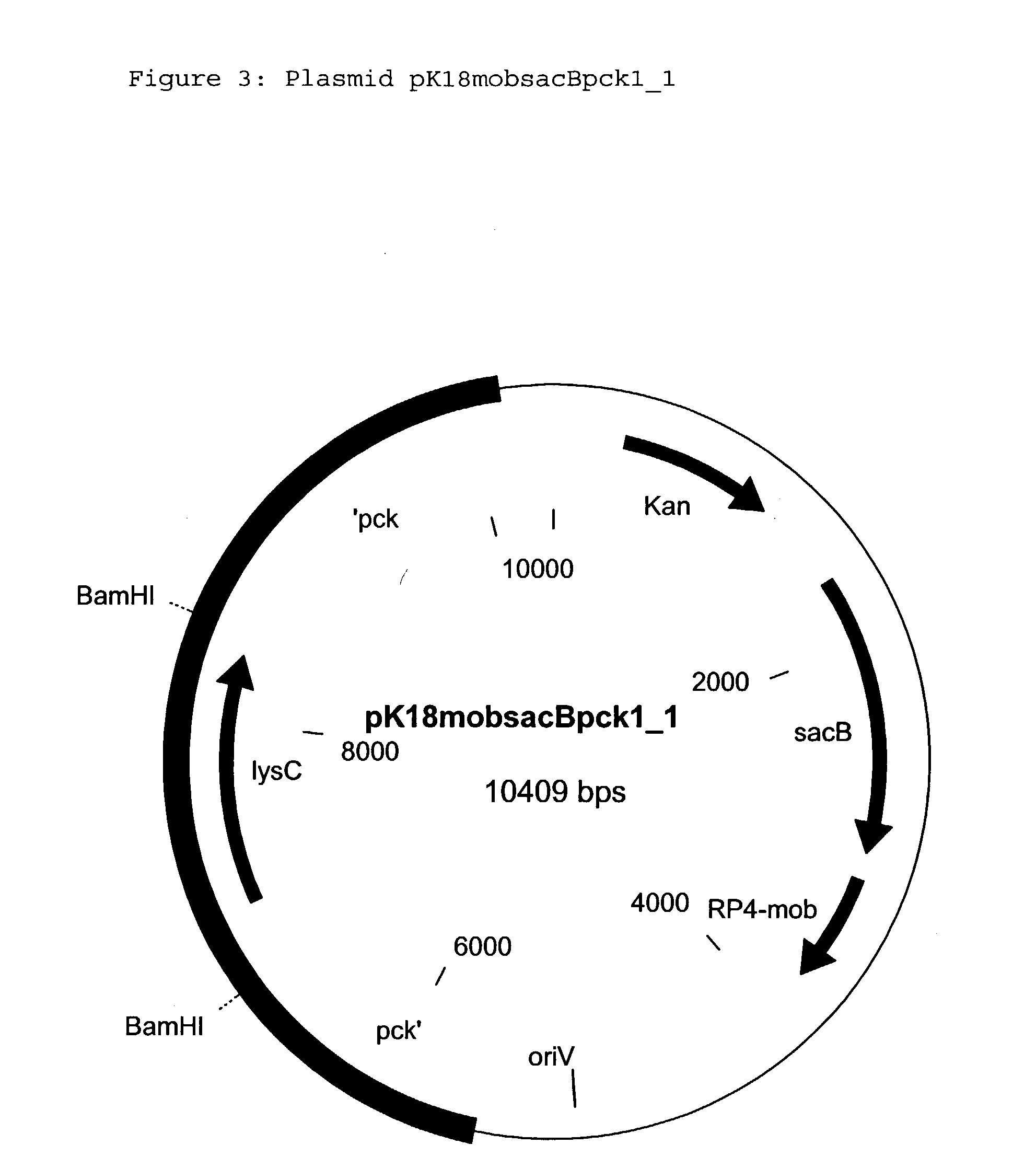Coryneform bacteria which produce chemical compounds I
a technology of coryneform bacteria and chemical compounds, which is applied in the direction of bacteria based processes, biochemistry apparatus and processes, microorganisms, etc., can solve the problems of plasmid loss spontaneously, the nucleotide sequences of the plasmid and the antibiotic resistance gene necessary for selection remain in the microorganism, and the biomass is disposed and utilized. to achieve the effect of improving the production of tryptophan
- Summary
- Abstract
- Description
- Claims
- Application Information
AI Technical Summary
Benefits of technology
Problems solved by technology
Method used
Image
Examples
example 2
[0263] Incorporation of a second copy of the ddh gene into the chromosome (target site: gluB gene) of the strain DSM12866
[0264] 2.1 Construction of the Replacement Vector pK18mobsacBglu2.sub.--1
[0265] The Corynebacterium glutamicum strain ATCC13032 is used as the donor for the chromosomal DNA. From the strain ATCC13032, chromosomal DNA is isolated using the conventional methods (Eikmanns et al., Microbiology 140: 1817-1828 (1994)). With the aid of the polymerase chain reaction, a DNA fragment which carries the gluB gene and surrounding regions is amplified. On the basis of the sequence of the gluABCD gene cluster known for C. glutamicum (Kronemeyer et al., Journal of Bacteriology, 177: 1152-1158 (1995); EP1108790) (Accession Number X81191 and AX127149), the following primer oligonucleotides are chosen for the PCR:
21 gluA_beg: 5' CAC GGT TGC TCA TTG TAT CC 3' (SEQ ID NO: 13) gluD_end: 5' CGA GGC GAA TCA GAC TTC TT 3' (SEQ ID NO: 14)
[0266] The primers shown are synthesized by MWG Biot...
example 3
[0285] Incorporation of a second copy of the dapA gene into the chromosome (target site: aecD gene) of the strain DSM12866
[0286] 3.1 Construction of the Replacement Vector pK18mobsacBaecD2.sub.--1
[0287] The Corynebacterium glutamicum strain ATCC13032 is used as the donor for the chromosomal DNA. From the strain ATCC13032, chromosomal DNA is isolated using the conventional methods (Eikmanns et al., Microbiology 140: 1817-1828 (1994)). With the aid of the polymerase chain reaction, a DNA fragment which carries the aecD gene and surrounding regions is amplified. On the basis of the sequence of the aecD gene known for C. glutamicum (Rossol et al., Journal of Bacteriology 174:2968-2977 (1992)) (Accession Number M89931), the following primer oligonucleotides are chosen for the PCR:
24 aecD_beg: 5' GAA CTT ACG CCA AGC TGT TC 3' (SEQ ID NO: 11) aecD_end: 5' AGC ACC ACA ATC AAC GTG AG 3' (SEQ ID NO: 12)
[0288] The primers shown are synthesized by MWG Biotech and the PCR reaction is carried out...
example 4
[0308] Incorporation of a second copy of the pyc gene in the form of the pyc allele pycP458S into the chromosome (target site: pck gene) of the strain DSM12866
[0309] 4.1 Construction of the Replacement Vector pK18mobsacBpck1.sub.--3
[0310] The replacement vector pK18mobsacBpck1 described in Example 1.5 is used as the base vector for insertion of the pyc allele.
[0311] As described in Example 2.1, a DNA fragment which carries the pyc gene and surrounding regions is also amplified with the aid of the polymerase chain reaction. On the basis of the sequence of the pyc gene cluster known for C. glutamicum (Peters-Wendisch et al., Journal of Microbiology 144: 915-927 (1998)) (Accession Number Y09548), the following primer oligonucleotides are chosen for the PCR:
27 pyc_beg: (SEQ ID NO: 19) 5' TC(A CGC GT)C TTG AAG TCG TGC AGG TCA G 3' pyc_end: (SEQ ID NO: 20) 5' TC(A CGC GT)C GCC TCC TCC ATG AGG AAG A 3'
[0312] The primers shown are synthesized by MWG Biotech and the PCR reaction is carried o...
PUM
| Property | Measurement | Unit |
|---|---|---|
| temperatures | aaaaa | aaaaa |
| temperature | aaaaa | aaaaa |
| temperature | aaaaa | aaaaa |
Abstract
Description
Claims
Application Information
 Login to View More
Login to View More - R&D
- Intellectual Property
- Life Sciences
- Materials
- Tech Scout
- Unparalleled Data Quality
- Higher Quality Content
- 60% Fewer Hallucinations
Browse by: Latest US Patents, China's latest patents, Technical Efficacy Thesaurus, Application Domain, Technology Topic, Popular Technical Reports.
© 2025 PatSnap. All rights reserved.Legal|Privacy policy|Modern Slavery Act Transparency Statement|Sitemap|About US| Contact US: help@patsnap.com



